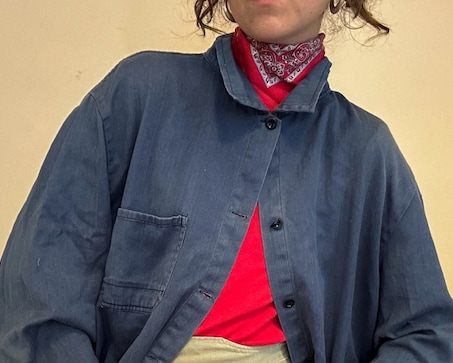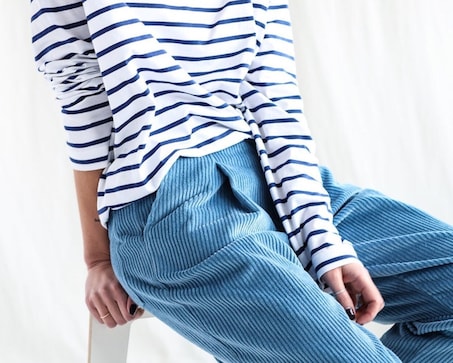There's more than meets the eye to these appealing trinkets — they double as viewers for microscopic photographs showing famous scenes and sights.
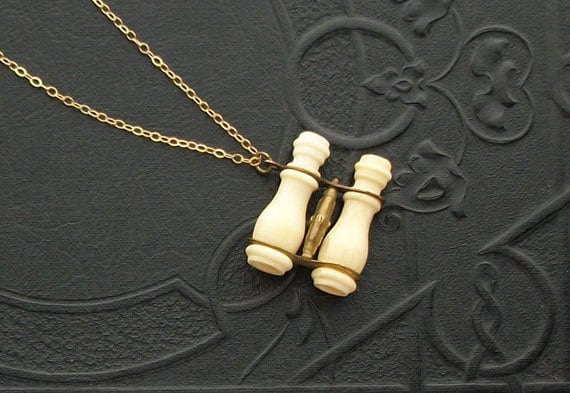
Jeni Sandberg is a dealer, appraiser and consultant in 20th century design. She has worked in museums, was a Senior Specialist at Christie's, and also appears on WGBH's Antiques Roadshow. She writes about fun objects on her blog. In this series, she will explore the history of decorative objects. Today's subject: antique novelty viewers that allowed revelers to view magnificent scenes — at a microscopic scale. Before cameras became the ubiquitous items they are today, tourists relied upon souvenirs to bring home images of the places they visited. In the 19th century, popular locations such as Niagara Falls were captured on countless trinkets, postcards and other mementos. Among them was this small charm in the form of binoculars. Though it measures less than an inch long, when you look through the viewer you can amazingly see ten small photographs of Niagara Falls and other attractions in the area.
 An%20example%20of%20Niagara%20Falls%20photos%20one%20might%20see%20inside%20a%20Stanhope.%3Cp%3E%3Ca%20href%3D%22http%3A%2F%2Fwww.stanhopes.info%2F%22%20target%3D%22_blank%22%3EKen%20Scott%3C%2Fa%3E%3C%2Fp%3E
An%20example%20of%20Niagara%20Falls%20photos%20one%20might%20see%20inside%20a%20Stanhope.%3Cp%3E%3Ca%20href%3D%22http%3A%2F%2Fwww.stanhopes.info%2F%22%20target%3D%22_blank%22%3EKen%20Scott%3C%2Fa%3E%3C%2Fp%3EThis type of photo viewer, called a Stanhope, was a popular novelty during the second half of the 19th century. A Stanhope is a small glass lens through which a photograph can be viewed, usually housed in a piece of jewelry, writing implement, sewing accessory or other object. The photograph itself is tiny and could literally fit on the head of a pin. The lens allows the microscopic image to be seen when held to the light; this microphotograph of the Philadelphia Mental Hospital circa 1865, though not technically a Stanhope, shows the incredible scale of the photographs.
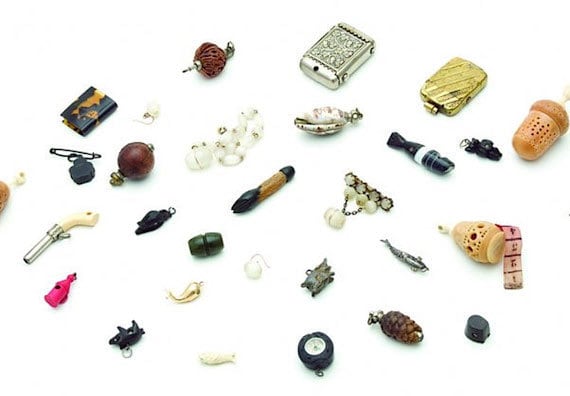 A%20wide%20variety%20of%20Stanhopes.%3Cp%3E%3Ca%20href%3D%22http%3A%2F%2Fwww.guernseys.com%22%20target%3D%22_blank%22%3EPhoto%20courtesy%20of%20Guersey's%3C%2Fa%3E%3C%2Fp%3E
A%20wide%20variety%20of%20Stanhopes.%3Cp%3E%3Ca%20href%3D%22http%3A%2F%2Fwww.guernseys.com%22%20target%3D%22_blank%22%3EPhoto%20courtesy%20of%20Guersey's%3C%2Fa%3E%3C%2Fp%3ESeveral men contributed to the development of the Stanhope: Charles, the third earl of Stanhope and noted 18th-century scientist, came up with the lens; the rod of glass is convex on one side and flat on the other, which magnifies the object beneath it. The Earl gave his name to the device, though he was not alive to see it used widely. The image in a Stanhope was dependent upon advances in photography in the 19th century. Microphotography — reducing the printed image to a very small size — was pioneered by Englishman John Benjamin Dancer. He could make a tiny photo, but he mounted it in a glass slide that required a microscope for viewing, which limited its widespread use. It was Frenchman René Dagron who saw the commercial possibilities of combining the Stanhope lens with microphotography. He developed the device that allowed for the easy viewing of the tiny photos. Dagron aggressively marketed Stanhopes to a 19th-century public that delighted in visual tricks and the surprises of new technologies; he displayed his Bijoux photographiques microscopiques at London’s 1862 International Exposition, where he won an honorable mention and began selling his novelty viewers via mail order to buyers around the world.
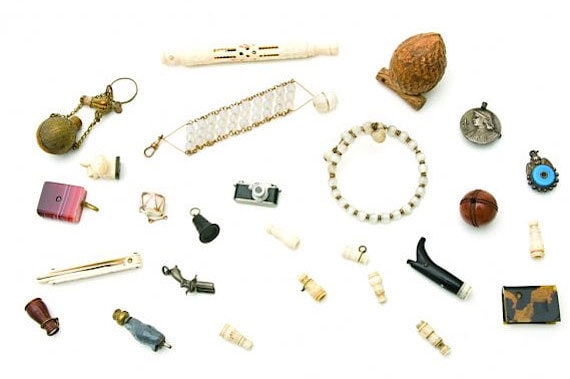 %3Cp%3E%3Ca%20href%3D%22http%3A%2F%2Fwww.guernseys.com%22%20target%3D%22_blank%22%3ECourtesy%20of%20Guernsey's%3C%2Fa%3E%3C%2Fp%3E
%3Cp%3E%3Ca%20href%3D%22http%3A%2F%2Fwww.guernseys.com%22%20target%3D%22_blank%22%3ECourtesy%20of%20Guernsey's%3C%2Fa%3E%3C%2Fp%3EAmusing and relatively affordable, Stanhopes gained great popularity. Dagron put these small photo viewers in to all manner of objects and used photos of royalty, politicians, tourist sites and religious scenes (they were also a discrete way to hide more risqué subjects). The cases could be in the form of churches, thimbles, crosses, animals and the viewer could also hidden within larger objects like walking sticks. For example, check out this late 19th century ivory needle case with images of Maine, or this microphotograph of the Philadelphia Mental Hospital in 1965. (This is not technically a Stanhope, but it shows the scale of the photos.) Niagara Falls was an especially popular subject for these souvenirs. The Falls viewed through a Stanhope was a remarkable juxtaposition: the natural wonder, celebrated for its jaw-dropping enormity, was reduced to microscopic scale. The case was sometimes in the shape of a barrel, recalling the sometimes ill-fated journeys of daredevils who went over the Falls inside one. For more information, check out Etsy seller Wicked Darling’s excellent blog post on Stanhopes and Niagara Falls. Have you ever looked inside a Stanhope?

